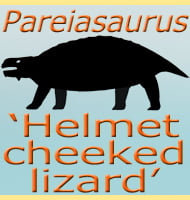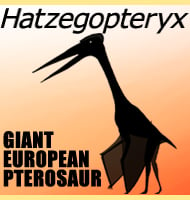In Depth
Eastmanosteus was originally known as Dinichthys pustulosus until it was realised to be a separate genus in its own right. In these circumstances the species name is retained and added to the new genus to become the type species for the new genus. Hence Dinichthys pustulosus became Eastmanosteus pustulosus, the genus name being derived from the man who named the earlier Dinichthys species.
Eastmanosteus was morphologically similar to its larger cousin Dunkleosteus, although because Eastmanosteus was much smaller, it probably had a different ecological niche. Also the smaller size of Eastmanosteus meant that it could operate in environments where the large bulk of giants like Dunkleosteus would have been problematic.
Fossils of Eastmanosteus calliapsis from the Australian Gogo Formation have been very interesting in that they reveal the presence of soft tissues such as muscles and blood vessels. This is an important discovery as usually only the bony plates are preserved. Although reconstructing the entire inner workings of Eastmanosteus and by extension placoderms is still difficult from these remains, they do offer an intriguing glimpse at the living animal. This preservation may in part be due to the fact that E. calliapsis is estimated to be about half the upper size estimate of the genus (1.5 meters long for the species as opposed to three meters long for the maximum genus size). It also represents some of the earliest preserved soft tissue known, since the Devonian period stretches back over three-hundred and sixty million years ago. The Australian Gogo Formation itself is estimated to be from the Frasnian stage of the Devonian, making the soft tissue remains of Eastmanosteus over three-hundred and seventy-five million years old.
Further Reading
– Branch Agnatha. In D. V. Obruchev (ed.) – Fundamentals of Paleontology. Vol. XI. Agnatha, Pisces. Izdatel’stvo “Nauka” Moscow 36-167 – D. V. Obruchev – 1964. – A new species of eastmanosteid arthrodire (Pisces: Placodermi) from Gogo, Western Australia. – Zoological Journal of the Linnean Society Volume 90 Issue 1, Pages 1 – 64. – K. Dennis-Bryan – 1986. – Eastmanosteus lundarensis sp. nov. from the Middle Devonian Elm Point and Winnipegosis Formations of Manitoba – Journal of Vertebrate Paleontology – vol 16 issue 4 – Gavin F. Hankea, Kenneth W. Stewarta & George E. Lammers – 1996. – Exceptional preservation of nerve and muscle tissues in Late Devonian placoderm fish and their evolutionary implications. – Biology Letters 3 (2): 197–200 – Kate Trinajstic, Carina Marshall, John Long & Kat Bifield – 2007.











